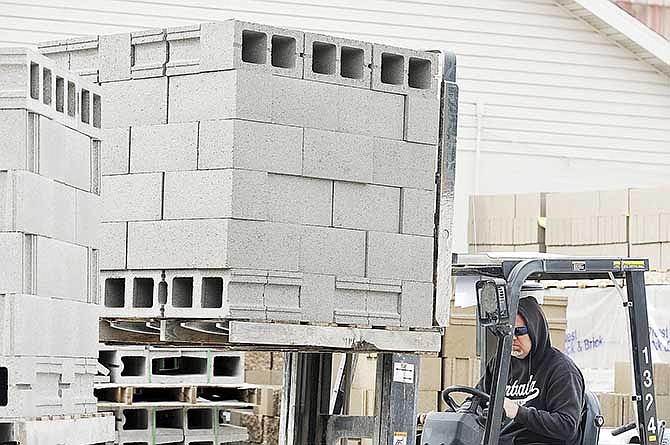An age-old building method is being revamped, in hopes of creating a better product and utilizing a scrap material.
Dr. Mohamed A. ElGawady, a researcher at Missouri University of Science and Technology in Rolla, is currently testing new masonry blocks made with ground tires. Jefferson City's own Midwest Block and Brick gets to be a part of it.
The local business has gotten in on the ground floor, partnering with Dr. ElGawady to make the blocks.
"Dr. ElGawady came to us to ask if we would be willing to do some "real life' feasibility in regards to producing products to assist him and his team with research," Midwest Block and Brick president Darryl Winegar said.
The blocks could find a new use for scrap tires, while also creating a better masonry block.
"Rubber has a lot of benefits in addition to its sustainability," said ElGawady, associate professor of civil, architectural and environmental engineering. "It's very durable and provides good insulation. Among their many potential benefits, these new blocks could cut heating bills by 50 percent."
Using ElGawady's methods, Midwest Block and Brick substituted different ratios of sand with the recycled rubber additive, Derrick Lueckenhoff, Midwest Block and Brick construction technology, said last week. Although the company does use other recycled additives in its block, such as post industrial aggregates, this was the first time, to Lueckenhoff's knowledge, that rubber would be used.
The rubber-added blocks, called rubberized blocks, were constructed with a variety of ratios of sand to rubber particles before coming up with the right balance.
"The rubber makes the blocks a bit weaker, so after testing various percentages, we now only replace about 20 percent of the sand with rubber, so the blocks retain their strength," ElGawady said.
Midwest Block and Brick prepared and delivered the blocks before ElGawady and his students used a compression machine to test the blocks. Both rubberized and traditional blocks were tested in an environmental chamber at Missouri S&T, where they underwent cycles of extreme temperatures and humidity levels to simulate different weather conditions.
"Construction with these new blocks could improve a building's resiliency during an earthquake by acting as shock absorbers," said ElGawady.
The blocks were also tested under cyclic compression loads to simulate earthquake loads.
"It's exciting to see people like Mohamed thinking outside the box, using recycled materials in a very sustainable product like masonry," Lueckenhoff said.
Lueckenhoff said it is neat to be a part of research done right here in Central Missouri that could potentially effect how people build across the world. "His local research is having a very global impact."
"It truly is an exciting situation when a design and research team wants to test performance of items that could genuinely affect the performance of our products in applications around the world," Winegar said. "Midwest Block and Brick does our best to try and assist the creative thinkers at the university level with exciting research ideas. This one seemed like a good fit for us to incorporate the research ideas into a fully operational plant and to give more feedback if the process was viable as well as provide units for Dr. ElGawady to continue his research on."

